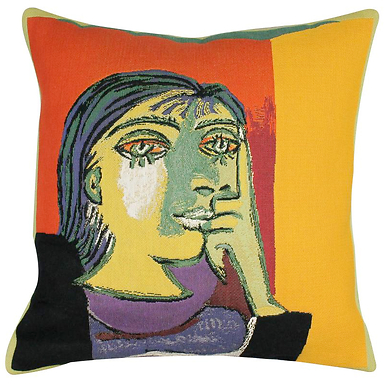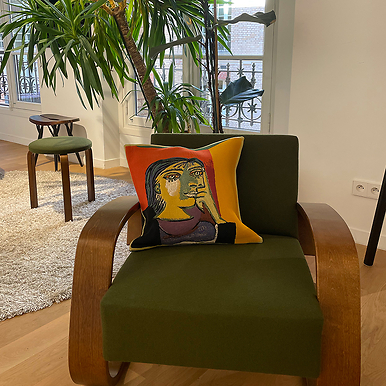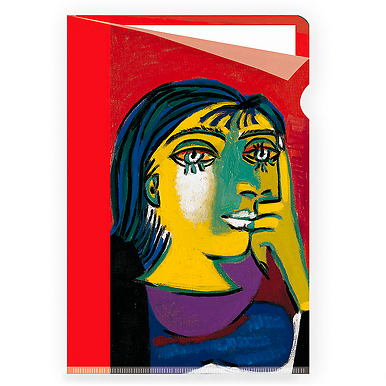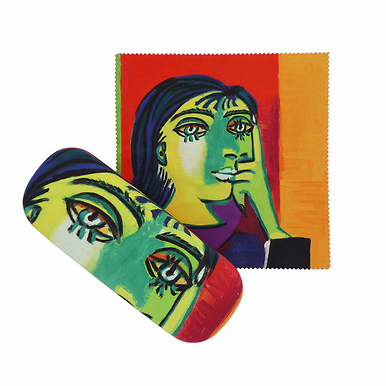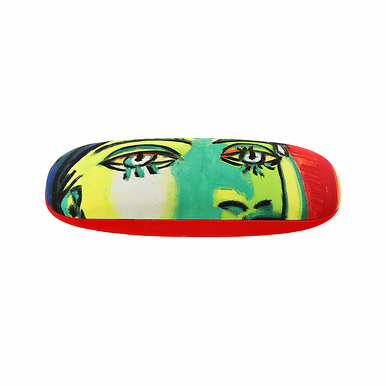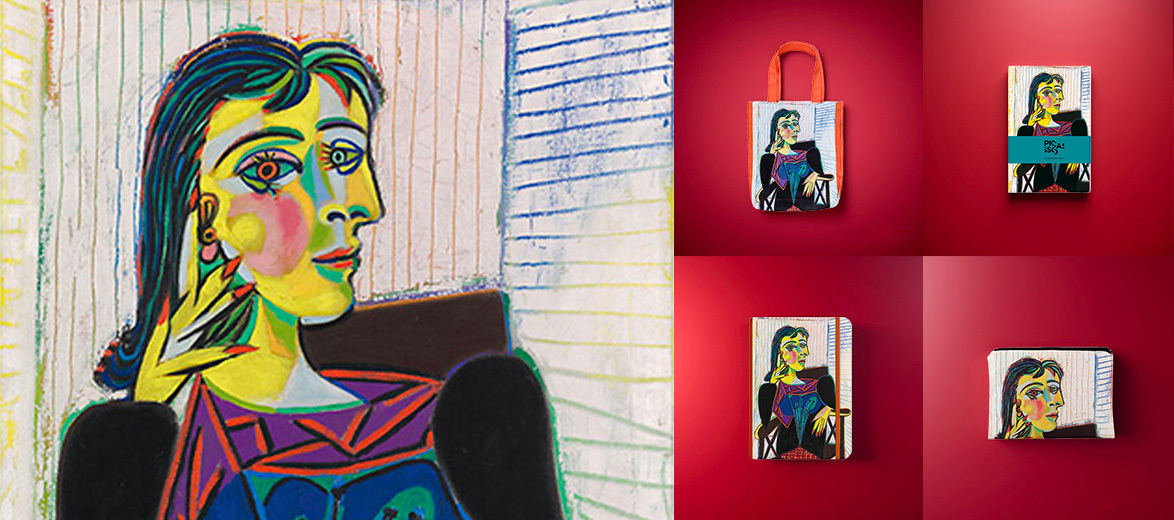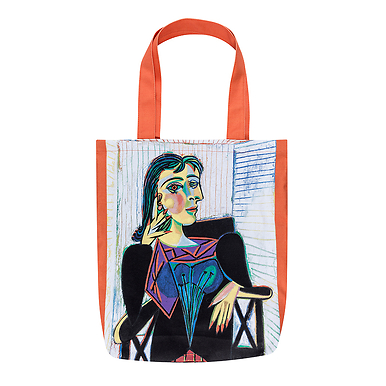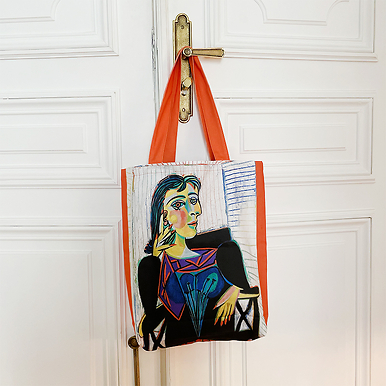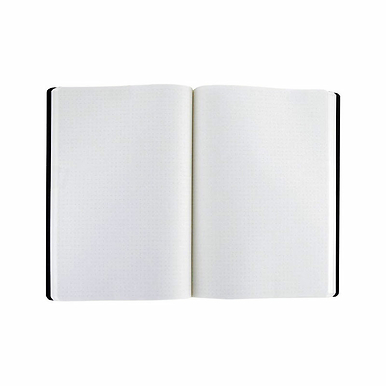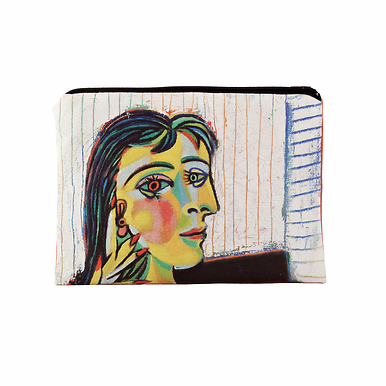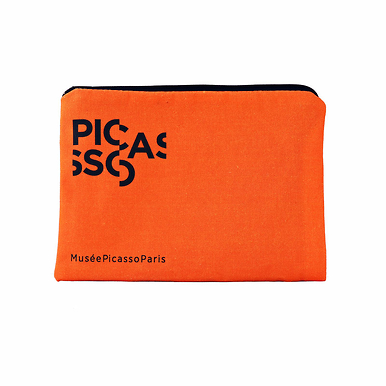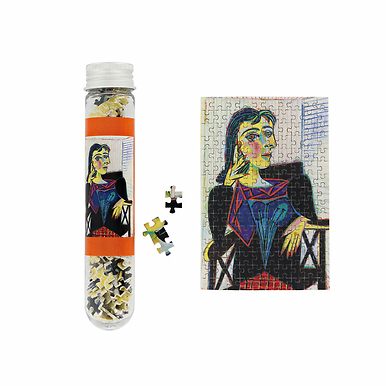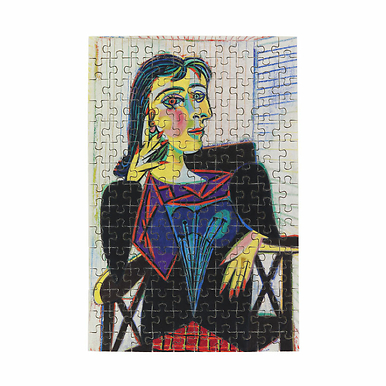Portraits of Dora Maar by Picasso line - Musée national Picasso-Paris

Pablo Picasso's "Portrait of Dora Maar", painted in 1937, is emblematic of the period when Picasso was particularly interested in Dora Maar, his partner at the time. The painting captures the complex emotional intensity of the relationship between the two artists.
The portrait is a representation of Dora Maar, who appears both distorted and fragmented, with stylistic traits typical of Picasso, in particular the influence of Cubism and his Surrealist period. Dora's face is cut into several parts, with geometric shapes and angles that break with the classical proportions of the human body. The result is an expressive, distorted face that seems both enigmatic and disquieting.
The painting is marked by a contrasting color palette, in which shades of red, blue and yellow particularly stand out. These vivid colors, combined with the distortion of the face, create an atmosphere of inner conflict, suggesting a struggle between perception and reality. Dora Maar's gaze in this work seems both intense and distant, as if she were in the grip of an inner torment.
The Portrait of Dora Maar was painted by Pablo Picasso in 1937, a year after their first meeting in Paris and the start of a relationship that would last almost nine years.
The Portrait of Dora Maar is a fairly classical composition, in which body and setting are intertwined. Here, the model's body is framed by the structure of the chair and masked by her black garment. Leaning back in the armchair, Dora Maar strikes a classical pose, balanced by the position of her hands. Her monumentality is accentuated by the geometric shapes that make up and carve out her garment. Her epaulets recall the fashion of the late 1930s.

